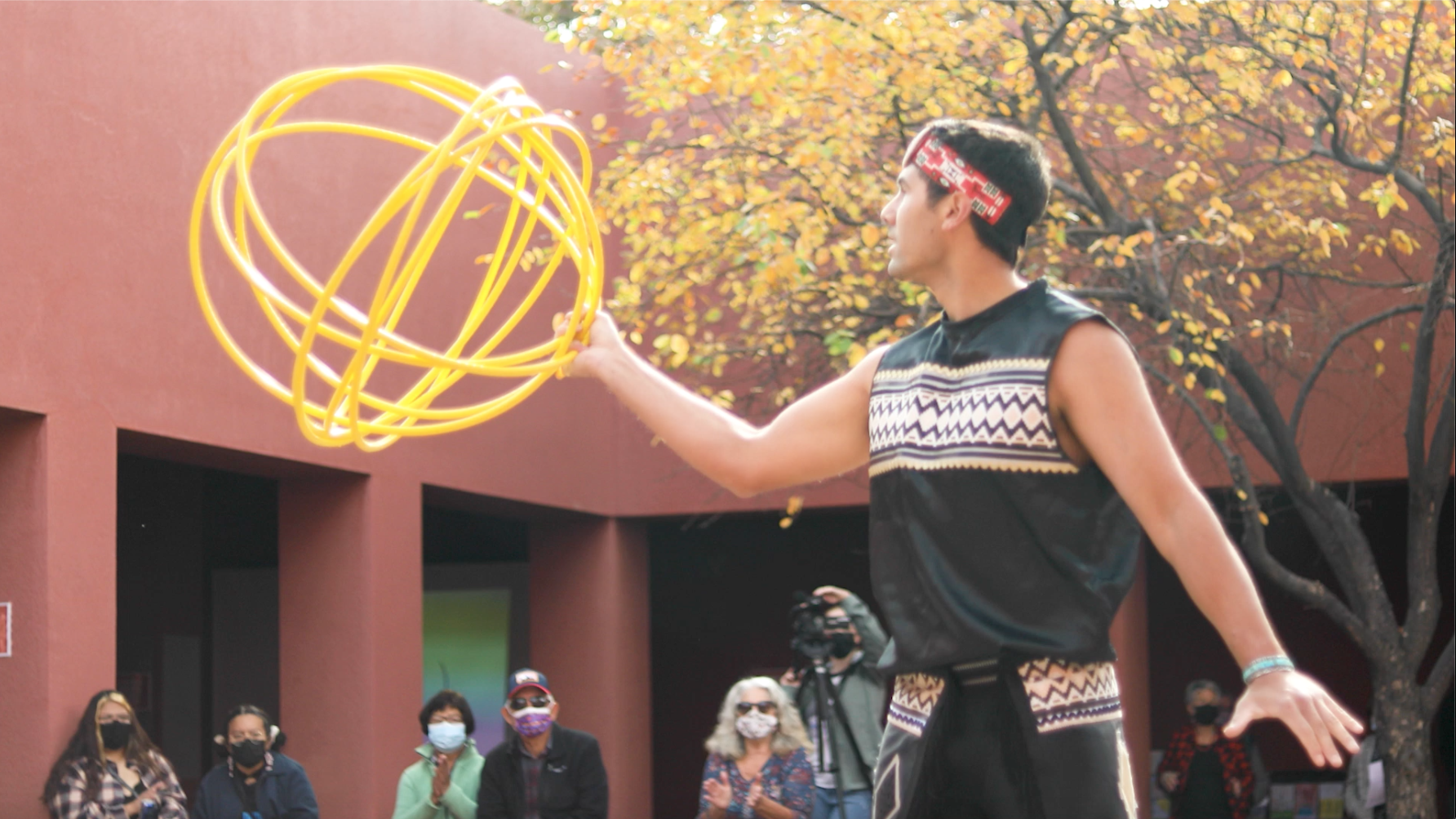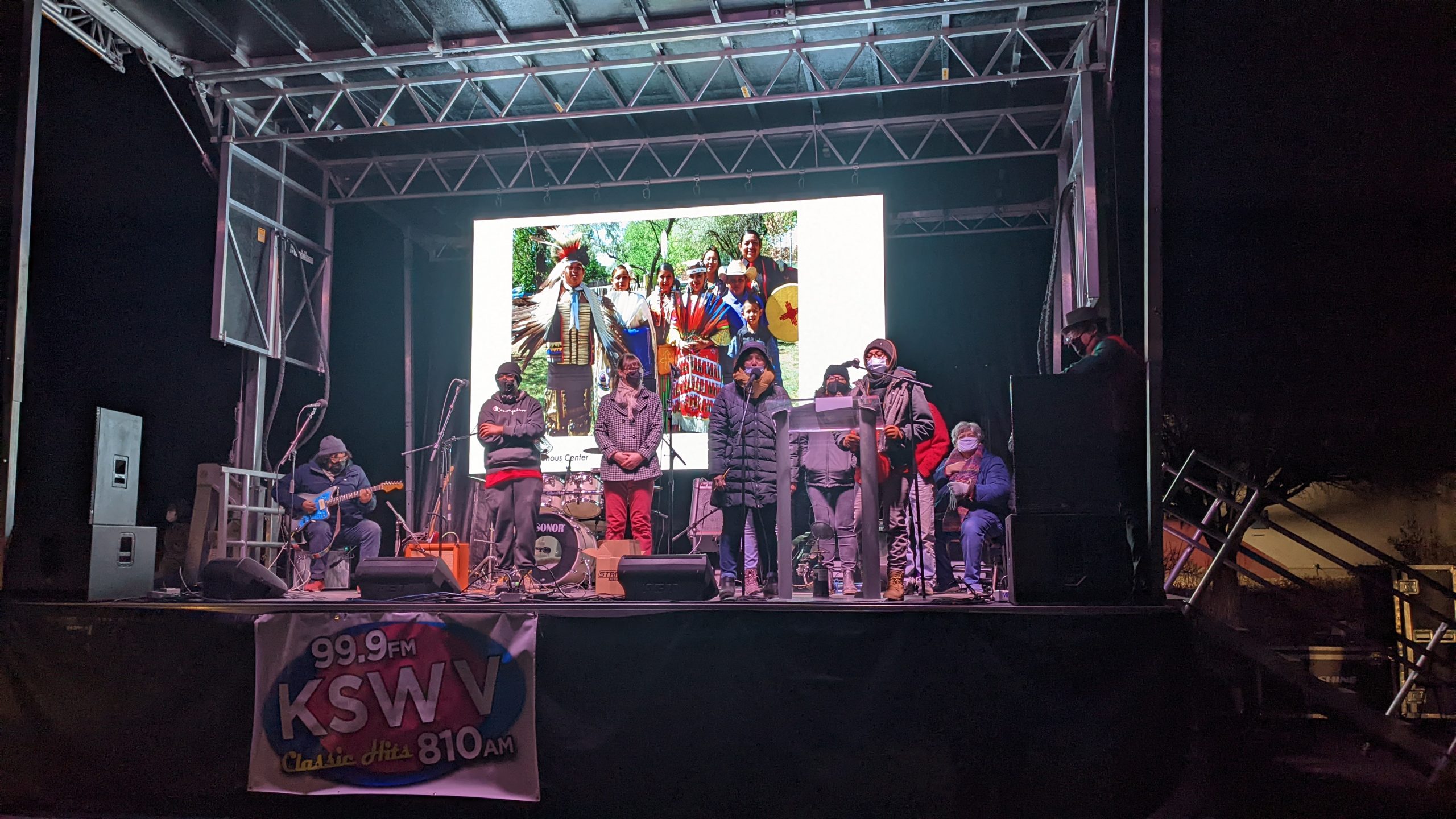Land Acknowledgement
Acknowledging this place, its history and its people
We acknowledge the breath of those that came before us and all of the living animals, on the ground and above it. We acknowledge that this place we now call Santa Fe is still recognized as Oga Po’geh (White Shell Water Place). Thousands of years ago, it was a center place for the communities of Northern and Southern Tewa (often identified as Tanos). The living memory and stories told by the people of Taytsúgeh Oweengeh (Tesuque Pueblo) hold profound meaning to this day, revealing that the ancestral site, Oga Po’geh is Taytsúgeh and Taytsúgeh is Oga Po’geh still.
We acknowledge that this place is also part of a much larger sovereign landscape for indigenous peoples: the chronicle of its headwaters are woven into the origin stories of Nambe Pueblo; the clays surrounding the site were a resource for both Tewa people and the Jicarilla Apache; and it is a place where stories are braided into and from the past by the Diné (Navajo), Cochiti, Taos and Hopi Pueblos and more still not yet told.
We acknowledge Spanish settlement occurred over four centuries ago and was as much about the possession of place as it was about the displacement of people. From that beginning, La Villa Real de la Santa Fe was made up of colonists from Spain, Mexico, France, Greece, and Portugal. There were also Africans and many “Indios Méxicanos” whose displacement may have begun in captivity but lived as free men and women. There were also thousands of enslaved indigenous people who came to be labeled Genízaro, Criado, and Famulo, and whose identities were listed in ecclesiastical records as Aa, Apache, Comanche, Diné, Kiowa, Pawnee, Paiute and Ute. Hundreds more were simply listed in the records as “Mexican Indians.” Complex castas stemmed from these origins, including people labeled as Colores Quebrados, Colores Revueltos, Colores Sospechos, Coyotes, and Mestizos.


Two and half centuries after these first Euro-mestizo settlements were formed, the push and pull of migration from every direction has brought new people to this place, including individuals and families from nearly every single state in the nation and from several other countries. The convergence of cultures and the profound and beautiful complexity of identity that is layered across four centuries of presence here, is reflected in the intricately woven genealogies of Santa Fe’s residents.
For those that continue to live in this place, generational or recently arrived, all must recognize the astonishing complexity of this magnificent and sovereign landscape and its people. Acknowledgment also requires holding both the beauty and the pain and supporting ongoing dialogue and story sharing, all of which reflect a vibrant and equitable community. We are the stewards of this land, of its water and air and of each other. Our breath, like the breath of those that precede us, will be left for those that follow us.
~~Originally drafted by Dr. Estevan Rael-Gálvez based on archival, ethnographic, and archaeological research in consultation with Taytsúgeh Oweengeh, other scholars and the Culture Connects Midtown team.

